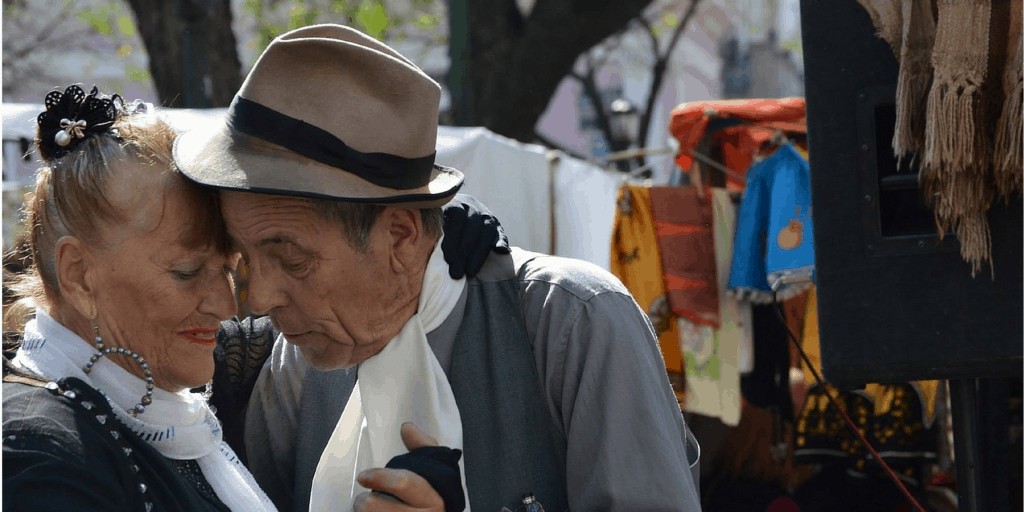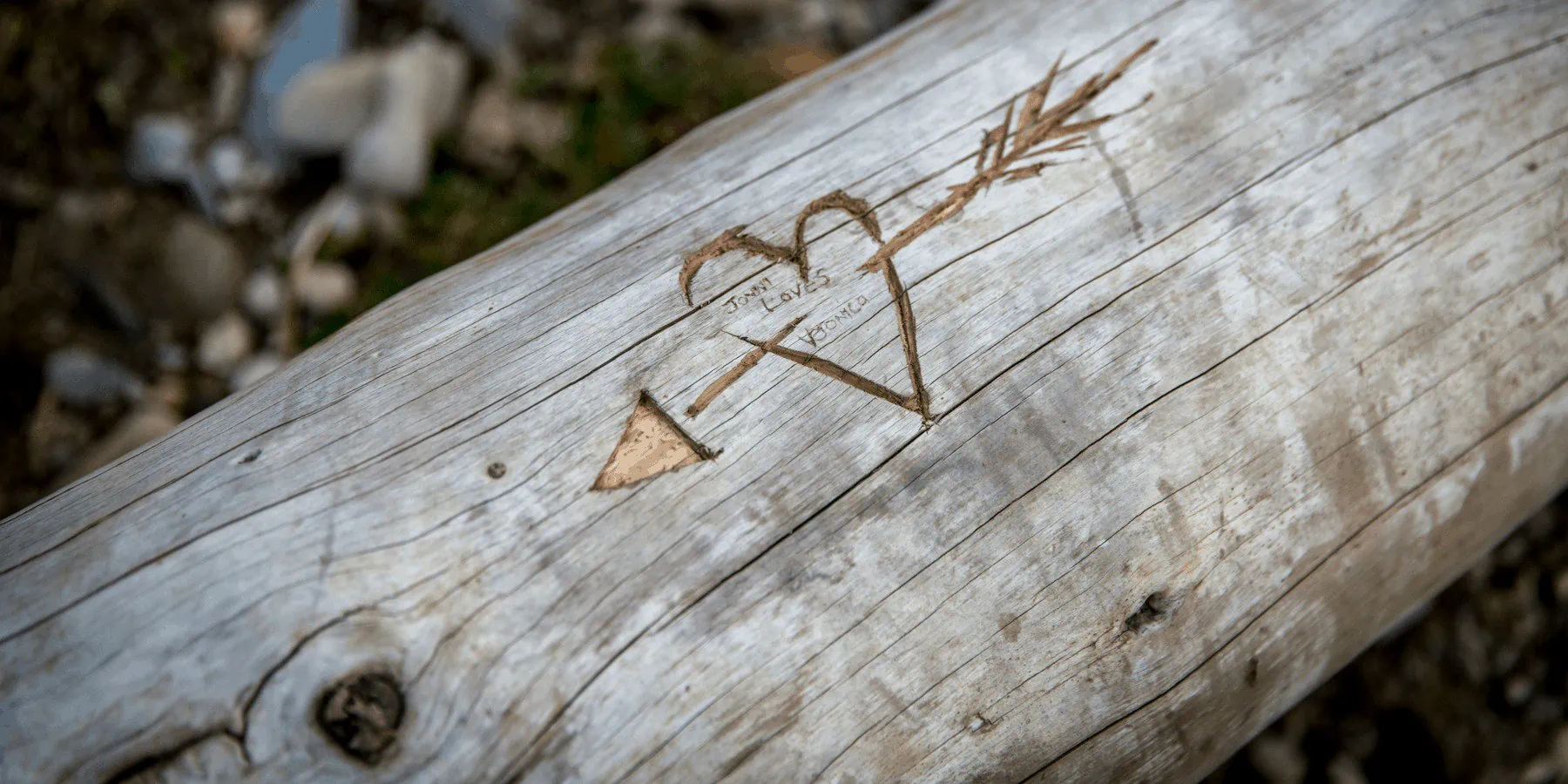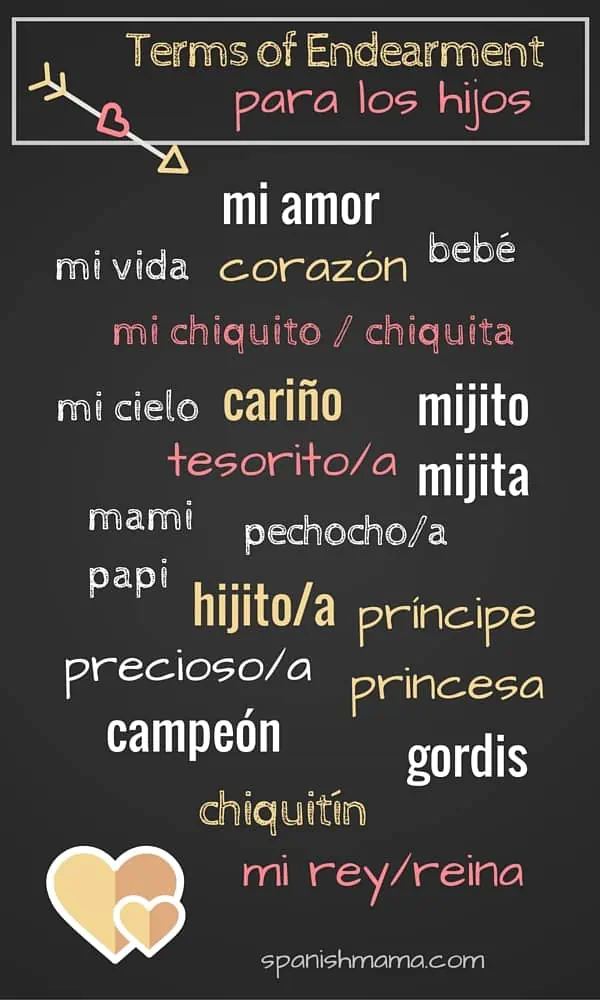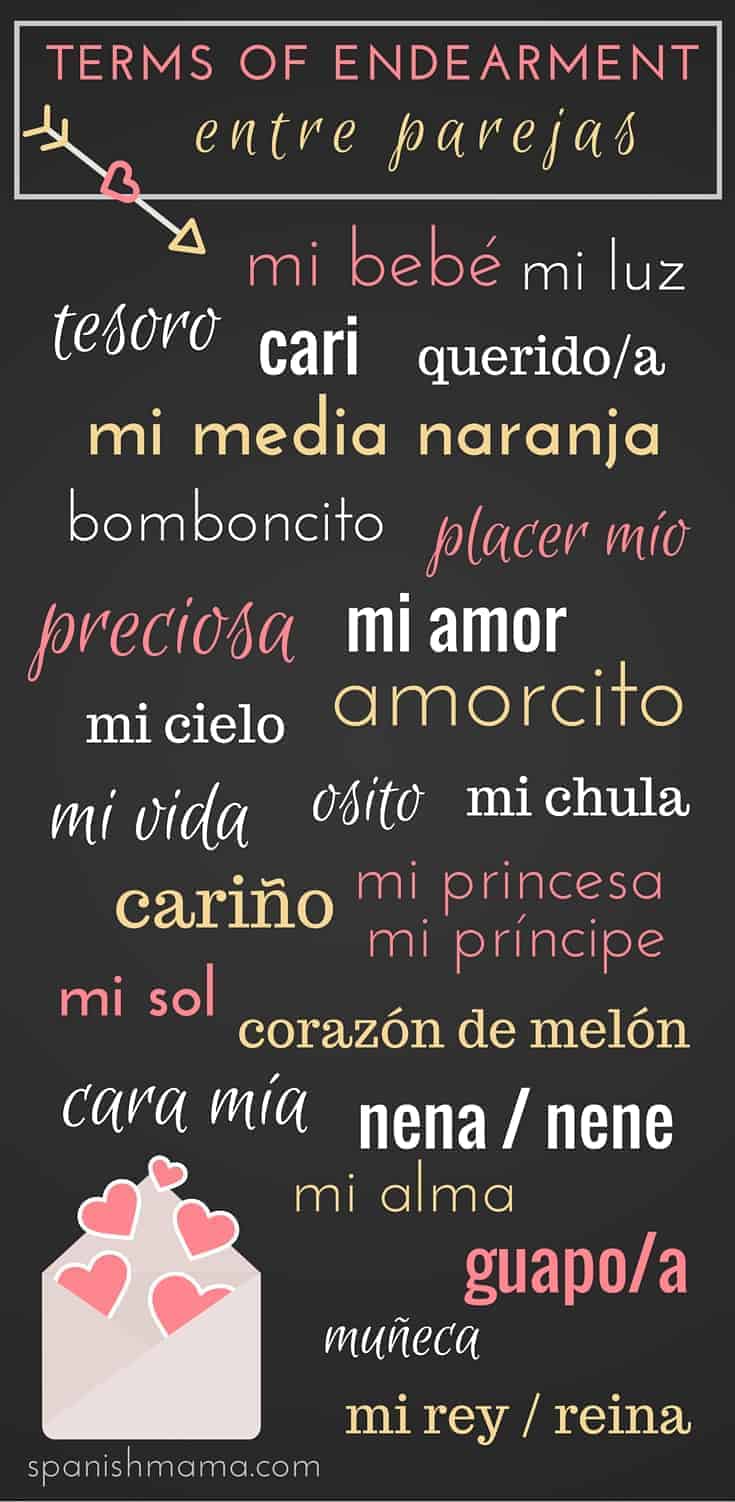Terms of Endearment in Spanish-Speaking Countries
Inside: Terms of endearment in Spanish, with examples a a free download.
You can’t be in a Spanish-speaking place long before you realize that greetings, good-byes, and addressing people takes on a whole new level. You never leave a party without saying good-bye to everyone single person, and “hola” really isn’t a sufficient way to say hello. Better to include a “buenos días” or “cómo está” if possible. And, the more you love a person, the less you say their name.
In Perú, you kiss to greet and meet and farewell. It takes a bit of figuring out, as a foreigner, and is even more complicated because kissing rituals vary across Spanish-speaking countries. And when people know you’re a foreigner, a la this post on awkward bicultural kissing moments. they might not kiss you because they know it’s not customary everywhere.
But here’s where you can never go wrong or overboard in Spanish-speaking countries: using terms of endearment. Truly.
In Spanish, it’s very common to address a person by who they are in relation to you. Students will call their teachers “profesora” or just “profe,” and friends would greet each other as “hola, amiga!” (hi, friend!). The rule seems to be, use the person’s title as much as possible.
(This was a lifesaver to me when I was culture-shocked and not speaking Spanish at all yet, and had no idea what anyone’s name was. All the people at our huge church constantly greeted me, and I would resort to “buenas tardes, hermano/a” (good afternoon, brother/sister) every. single. time.)
Especially in romantic relationships, terms of endearment in Spanish are huge. Actual names are generally saved for moments when you are trying to get your special someone’s attention in a roomful of other people who get called “amorcito” as well. To address one’s partner, you choose from a plethora of terms of endearment and add an –ito or –ita if at all possible. Affection is important, and I remember an older lady bragging to me that she and her husband, in their 40 years of marriage, were so in love they had never addressed each other by name.

When addressing your children, it’s more similar to English: names are used, but also often replaced with a term like “cariño” (dear). What’s different when addressing people in Spanish is that you actually use their title — “tía” (aunt), “hijito” (little son), “profe” (teacher), or “compañero” — without using their name at all.
I’ve pulled together common terms of endearment for both romantic couples and for sons/daughters. Any Spanish-speaker will probably notice the glaring omissions: gordo/a (fatty?), “flaco/a” (skinny person), viejo/a” (old person), and “negro/a” (dark person?). These are very common, and though they translate negatively, they’re meant affectionately. One of those lost-in-translation sort of things.
When my Peruvian boyfriend called me “gordita” for the first time, I didn’t react well. Since then, and since we got married, I say it myself. The process of becoming bi-cultural, I suppose!
So here you are. I know I missed some, so please let me know what I should have included! Below you can find the link to download the prints.
TERMS OF ENDEARMENT IN SPANISH FOR CHILDREN/SONS/DAUGHTERS:
TERMS OF ENDEARMENT IN SPANISH FOR ROMANTIC COUPLES:
Terms of Endearment Free DOWNLOAD
If you are looking for more Día de San Valentín / Día de los Enamorados / Día del Amor y Amistad things in Spanish, check out my Valentine’s Day in Spanish post, and Pinterest board!
Follow Spanish Mama’s board El día de San Valentín on Pinterest.









I don’t speak Spanish, but this makes so much sense to me when I listen to my Spanish speaking friends. Now I’m going to pay even more attention to when they address other Spanish speaking friends and family.
It’s really interesting! And helpful if you are bad with names. 😉 You will also notice that Spanish speakers often try to do this in English: “Hello, teacher” or “Bye, my friend.” I think English speakers hear this and unconsciously think their English is poor. Their English is correct, but culturally we don’t say those things.
Thanks for commenting!!
I love this!! So helpful.
Hola! I would love to do a Tree of Kindness with some of my elementary school students. Would you happen to have a list of terms of endearment for friends and classmates? Thank you for your willingness to share your experience and ideas with everyone.
I don’t! So sorry!